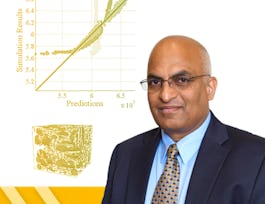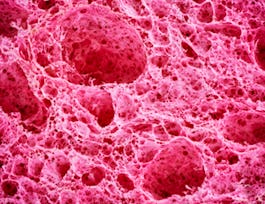3D printing with metals is revolutionizing manufacturing, engineering, and artistry. In “Introduction to 3D Printing with Metals,” you’ll learn about the essential elements of the technology, and how it can be applied to a range of use cases.



Introduction to 3D Printing with Metals

Instructor: Chinedum “Chi” Okwudire
Sponsored by Louisiana Workforce Commission
Recommended experience
What you'll learn
Recognize the importance and applications of 3D printing with metals in engineering, industrial contexts, and art and design
Articulate how 3D printing with metals differs from 3D printing with plastics
Explain five different families of processes used to 3D print with metals
Determine which 3D printing method is suited for your project
Details to know

Add to your LinkedIn profile
12 assignments
November 2024
See how employees at top companies are mastering in-demand skills


Earn a career certificate
Add this credential to your LinkedIn profile, resume, or CV
Share it on social media and in your performance review

There are 5 modules in this course
Welcome to the Introduction to 3D Printing with Metals course! Why does one need to 3D print with metals? When is it better to 3D print with metals as opposed to plastic? How is it different? This module will allow you to answer these important questions by reviewing the fundamentals of 3D printing with plastics and introducing the process of 3D printing with metals. Let's start printing!
What's included
9 videos6 readings3 assignments1 app item3 discussion prompts
Welcome to Module 2! Imagine this: Instead of welding metallic parts together, what if we let the weld be part itself? How to do that? Our imagination can become a reality. Directed Energy Deposition (DED) with metals is a family of processes that allow one to “draw” a part in 3D space by welding together material nonstop until the part is finished. In principle, this would be human-operable, but robotic welders do it because it requires long periods of nonstop operation. This module reviews three types of DED processes, which differ in the size and precision of the machinery used, in the form of the metal stock being welded, and in how the weld is performed. Let's start printing!
What's included
14 videos5 readings3 assignments1 app item2 discussion prompts
Welcome to Module 3! There are many applications for 3D printing with metals that demand extreme precision, far more so than the extrusion-based and welding-based processes—we have learned about so far—can satisfy. A class of processes called Powder Bed Fusion (PBF) addresses this concern by fusing metal powder particles with a far smaller and more concentrated heat source than Directed Energy Deposition (DED), with the powder particles laying stationary as a flat surface to further remove process variability. In this module, we will learn about two types of PBF processes, which differ in the technology used for the heat source. Let's start printing!
What's included
8 videos4 readings2 assignments1 app item2 discussion prompts
Welcome to Module 4! In Module 3, we discussed the powder bed fusion processes and how they produce parts with extreme geometric complexity. However, they are very slow processes. So, what could be done to improve the process speed? A class of methods known as jetting-based processes addresses these concerns by joining powder particles together at room temperature using a glue-like binder and then fusing the joined particles together into a solid part as a post-processing step. This can be done much faster than a continuous application of heat. In this module, we review two types of jetting-based processes, which differ in how the powder particles are joined together during the layer-wise printing process. Let's start printing!
What's included
9 videos4 readings2 assignments1 app item2 discussion prompts
Welcome to Module 5, the last Module of the Course! We know already that many applications for 3D printing with metals demand extremely strict quality control. The various fusing methods discussed earlier in the course struggle to meet these demands. Lamination-based processes address this limitation by joining together layers of metal sheets via low-intensity methods that almost exactly reproduce the properties of traditionally wrought material without needing extra post-processing work. In this module, we review two types of jetting-based processes, which differ in the technology used to fuse the metal sheets together. Let's finalize printing!
What's included
9 videos6 readings2 assignments1 app item2 discussion prompts
Instructor

Offered by
Why people choose Coursera for their career




Recommended if you're interested in Physical Science and Engineering

Georgia Institute of Technology

Arizona State University

L&T EduTech

Coursera Project Network

Open new doors with Coursera Plus
Unlimited access to 10,000+ world-class courses, hands-on projects, and job-ready certificate programs - all included in your subscription
Advance your career with an online degree
Earn a degree from world-class universities - 100% online
Join over 3,400 global companies that choose Coursera for Business
Upskill your employees to excel in the digital economy


